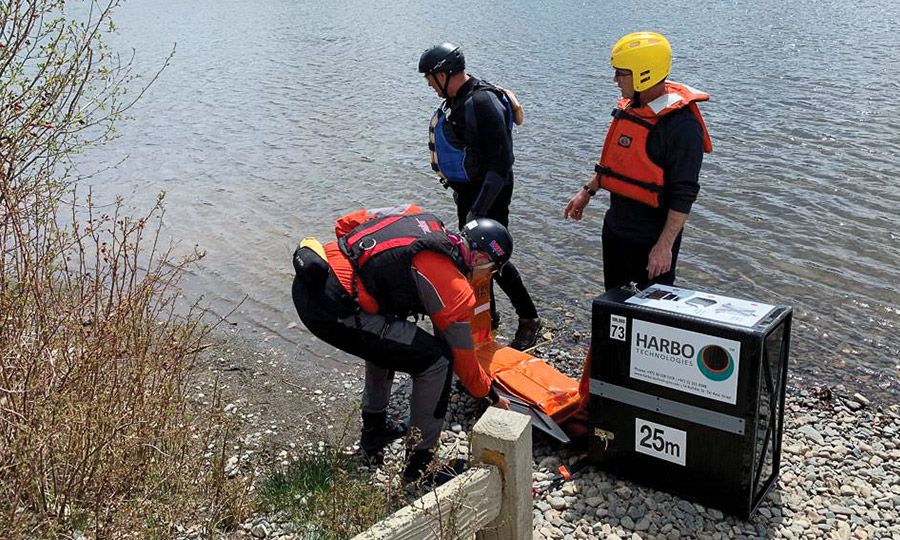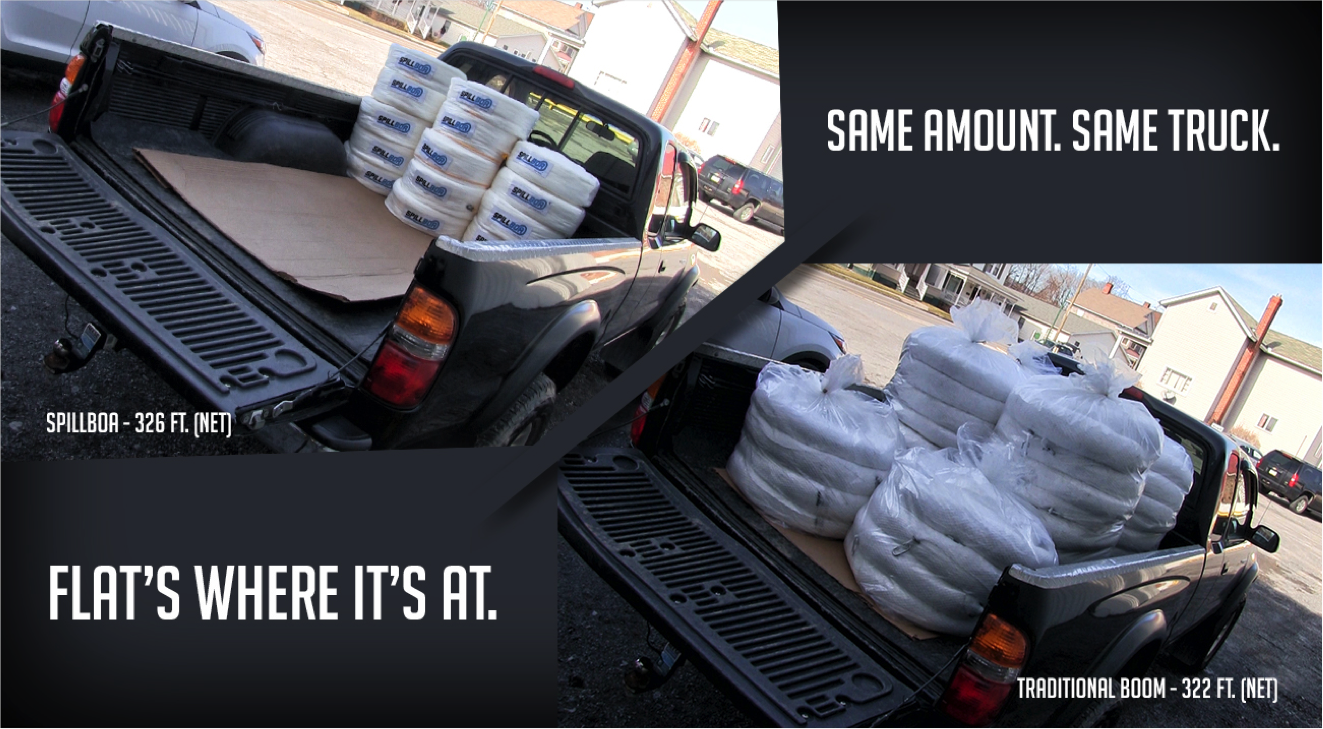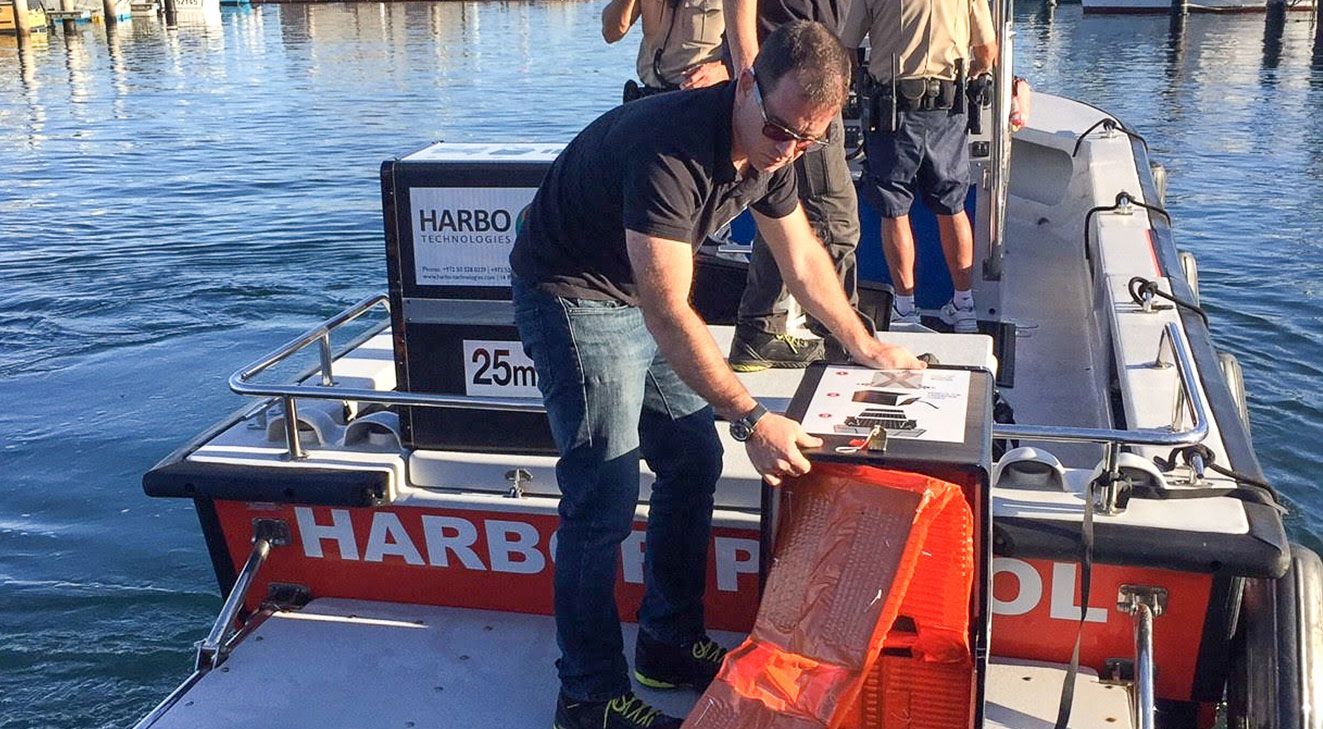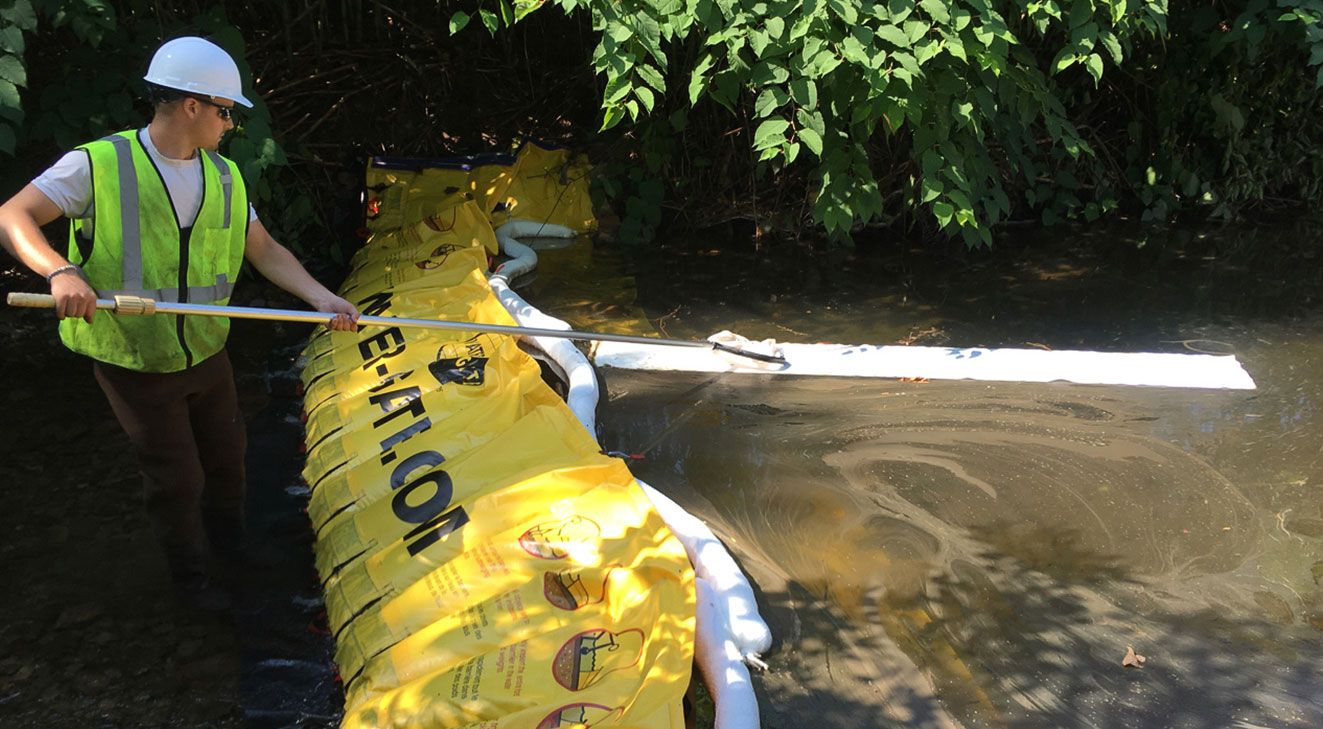

Ensure Rapid Response Time for Effective Spill Control
When petroleum spills happen, every minute is critical. Especially when that spill hits a body of water. Not only does it spread exponentially faster, the potential for impact to the environment is much greater.
The Challenge
We have all seen it. A few drops of oil or fuel hit a body of water, and the sheen spreads like wildfire. What may have only been a few drops, looks like a few gallons, due to the surface area it covers. Now, what happens if those few drops were hundreds or thousands of barrels? In the blink of an eye, the spill could cover acres of water or travel miles downstream.
In this scenario, time is money. As soon as the oil hits the water, the clock starts. The effectiveness of oil spill response always lies in the time it takes from the initial spill until it is contained.
On top of this, conventional methods for containing and cleaning up these sorts of events do not help this problem. Traditionally, responding to spills on water requires large, bulky equipment and trained personnel. It may take hours before trained personnel can respond. And, that is just to get them on site. Add to that the time it takes to deploy their equipment, once the spill has had an hour or two to spread.
Challenges to quickly containing the spill include:
- On-site employees are typically not skilled in deploying traditional spill response equipment.
- Even if employees are trained, conventional containment booms and spill materials are heavy, bulky and slow to deploy.
-
If equipment is not on site, transporting off-site equipment to the spill site could take an hour or more. In addition, you must wait for a specialized crew to arrive.
-
Once the specialized crew arrives, it will still take significant time to deploy the large and heavy equipment.
- A lot of these spills happen in hard- to-reach areas, which takes even longer to access with trailers full of equipment and products.
Add this all together, and the costs start to add up, and can include:
- Time and material costs to properly clean up the spill
- Remediation costs of impacted shorelines
- Disposal costs of used product
- Public relations (PR) costs
The Power of Time
Because bulk liquid terminals are often located along major bodies of water, they’re at a particular risk of spills spreading due to the volume of petroleum product they are handling and their location. In addition, a lot of these locations are remote and difficult to reach quickly. If there are personnel on site, it may only be one or two individuals, who are not trained to be oil spill response professionals.
Ultimately, a lot of companies are making sure that they have plans and equipment in place in order to provide the best possible response – however, a lot of these limitations prevent them from being effective during the first hour of the spill. On the other hand, if responders can get equipment in the water faster and stop the spread of oil, they can drastically reduce damage, use less resources, and improve clean up effectiveness.
Investigating and adopting new technology that can potentially boost overall effectiveness can be key to moving industry standards forward and promoting safety wherever possible. Not to mention, limit the cost and damage of a spill that has reached a waterway.
New Technologies
Various technologies have been developed in recent years that can quickly help to limit the damage of a spill that has reached a body of water. Addressing the downfalls of traditional products, these new technologies:
-
Take up approximately 80% less space
-
Deploy up to 40 times faster
-
Weigh significantly less
-
Do not require a team of trained professionals to deploy
-
Contain and start cleaning up spills in the critical first 30 minutes
SpillBoa® Rapid-Deployment Absorbent Boom
Most spill response materials are bulky and take up too much space and the first person on the scene rarely has enough supplies to hold the spill in check. So, the spill spreads until help arrives.
To solve the problem, product developers at HalenHardy took a novel approach. ‘We’ve always known that bulky spill control products took up too much space to be stored in vehicles and equipment. We decided to search for oil/ fuel sorbent materials that were able to be compressed by at least 75%,’ notes HalenHardy CEO Donny Beaver. ‘The sorbent also had to rebound to its original size once unpacked.’ After an exhaustive hunt, the team found the ideal fiber compound that enabled the users to store 400% to 1,000% more materials than traditional spill products.
For example, the patented SpillBoa® Absorbent Boom is a 5-inch by 25-foot ‘flat boom’ that coils up into a compact 16” diameter, and the roll weighs just four pounds. Its flat profile allows more surface contact, which helps each SpillBoa® barrier absorb oils/fuels 300% to 500% faster than traditional ‘overstuffed’ booms and socks. Plus, the innovative design holds back many more gallons of spilled material until cleanup crews arrive. SpillBoa® barrier also floats to contain oil spills on water.
Patented SpillBoa® response booms require 400% less storage space than traditional absorbent booms.
As a spill-response professional, I’m always looking for ways to help our customers save time and money. As soon as we saw the SpillBoa® boom in action, we recommended it to all our clients to keep in their vehicles and equipment as a first line of defense. It deploys up to 40 times faster than traditional products and helps mitigate the impact of oil and fuel spills.
Harbo Instant Boom
HARBO Technologies released a product in 2018 that overcomes many of the problems associated with traditional containment boom and helps to tackle the critical few minutes after a spill occurs. The T-Fence oil spill first response system enables companies to contain spills faster and stop the spills from spreading. The product is a lightweight, portable boom that is packaged in cartridges the size of suitcases. Each section is 82 feet and weighs 50 pounds, making it compact and manageable for a single person to carry and two people to deploy. The T-Fence can be used for any size spill because each 82-foot section is fastened with connectors on each end that can be connected during deployment.
The T-Fence system is lightweight and compact as it is stored flat inside the cartridge prior to deployment. As soon as it hits the water, it expands to a 12.5-inch system – a 4.5-inch draft above the water and 8-inch skirt below. The 82-foot boom is built of small sections that are connected together with flexible material, enabling it to easily follow the curvature of the water. In other words, it doesn’t fight the waves, but rather rides them. The above and below water sections, along with its unique aerodynamic and hydrodynamic design make the T-Fence a lightweight, portable and easy-to-use boom with equally heavy-duty containment capabilities.
HARBO containment boom is easily deployed by on-site workers in the critical first ten minutes after spill.
We believe that this system is a game changer, finally adding a long-anticipated layer of protection to oil spill response – the ability to block spills right when they start, wherever they occur and with local operators. In oil spill response, it’s all about time. By keeping a spill from spreading in the first 10-30 minutes after it happens, we will multiply the recovery rates seen today and prevent disastrous consequences.
Water-Gate Underflow Dam
Traditionally, when a spill reached a ditch or stream, a lot of times it would require responders to build a traditional underflow dam. This typically consisted of a lot of sandbags and dirt, pipes and significant manpower. The time it would take to construct meant that crews had to get far enough ahead of the spill, in order to have enough time to build the dam before the spill spread further downstream. The Water-Gate Underflow Dam solves all of these problems and gives responders a simple and effective tool to rapidly dam up streams, small rivers and ditches. Key attributes include:
-
Installation takes only minutes with just two people
-
Flexible material allows it to adapt to most stream and ditch bottoms
-
No special equipment needed and no filling with water or inflating with air. Simply unroll the dam, unfold the upstream flap and let the flow of the stream fill it
-
No anchoring needed – use the weight of the water, as it flows into the dam, to weigh it down to the stream bottom
-
Underflow holes built into the downstream side, so that you can regulate the flow on the upstream side and keep the spill contained
-
Multiple units can be attached together to make unlimited lengths
The Water-Gate Underflow Dam for streams allows clean water to flow beneath and captures floating oil on top.
Related Articles
Need some help choosing the right spill control products?
Contact us if you have any questions or need help finding the right spill control products. Our Customer Success Team is available by chat or by phone at 814-822-2004.


